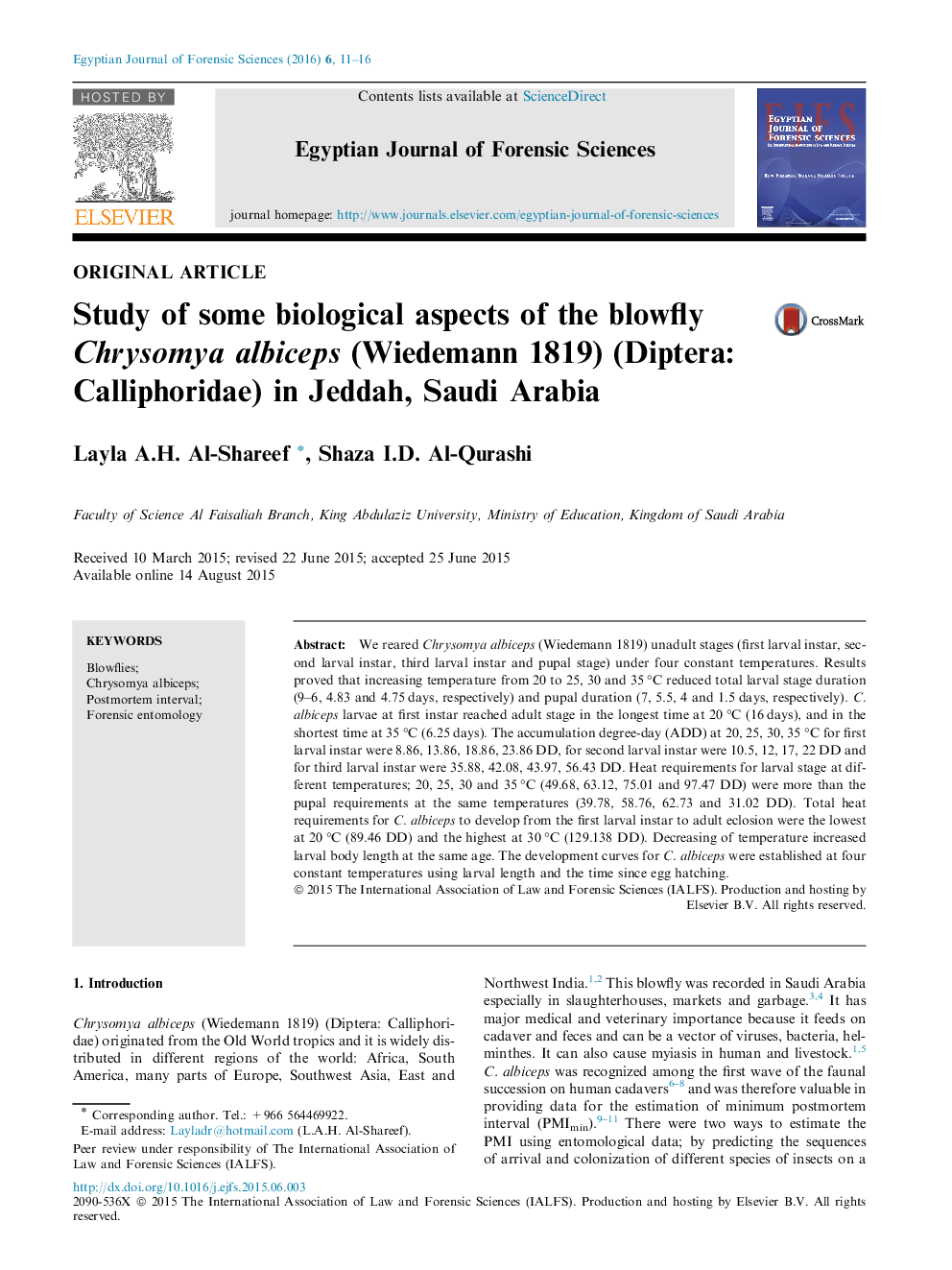| Article ID | Journal | Published Year | Pages | File Type |
|---|---|---|---|---|
| 1097485 | Egyptian Journal of Forensic Sciences | 2016 | 6 Pages |
We reared Chrysomya albiceps (Wiedemann 1819) unadult stages (first larval instar, second larval instar, third larval instar and pupal stage) under four constant temperatures. Results proved that increasing temperature from 20 to 25, 30 and 35 °C reduced total larval stage duration (9–6, 4.83 and 4.75 days, respectively) and pupal duration (7, 5.5, 4 and 1.5 days, respectively). C. albiceps larvae at first instar reached adult stage in the longest time at 20 °C (16 days), and in the shortest time at 35 °C (6.25 days). The accumulation degree-day (ADD) at 20, 25, 30, 35 °C for first larval instar were 8.86, 13.86, 18.86, 23.86 DD, for second larval instar were 10.5, 12, 17, 22 DD and for third larval instar were 35.88, 42.08, 43.97, 56.43 DD. Heat requirements for larval stage at different temperatures; 20, 25, 30 and 35 °C (49.68, 63.12, 75.01 and 97.47 DD) were more than the pupal requirements at the same temperatures (39.78, 58.76, 62.73 and 31.02 DD). Total heat requirements for C. albiceps to develop from the first larval instar to adult eclosion were the lowest at 20 °C (89.46 DD) and the highest at 30 °C (129.138 DD). Decreasing of temperature increased larval body length at the same age. The development curves for C. albiceps were established at four constant temperatures using larval length and the time since egg hatching.
